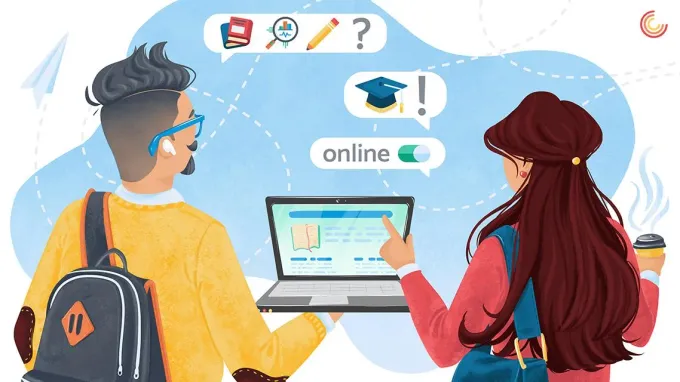What we do
Services
Experts in
Online education is no longer a trend or a fad. It’s an unexpected reality, a great challenge for governments worldwide, and a necessity of the COVID-19 pandemic. More than 1.3 billion learners in 186 countries have found themselves out of classrooms and locked in their homes, with online education being the only way to keep studying. Online education has also become a standard practice in higher education and corporate training. Before 2020, eLearning was considered an alternative to a physical classroom. But this year, it's become the default mode.
Shifting from classrooms to eLearning portals looked scary at the beginning. But as the months pass, schools and universities are doing their best to adapt to our brave new world. And it’s creating glorious opportunities for websites like Udemy and Coursera.
Since February, Coursera’s traffic has grown from 27 million to more than 70 million monthly visitors. In April 2020, Udemy reported a 425% increase in online course enrollment compared to February 2020. Multiple similar eLearning websites have also demonstrated raising graphs: demand has grown alongside the number of courses and students and the amount of revenue and investments.
But while massive platforms like Udemy and Coursera are enjoying growth, there’s still enough space in the global EdTech market for fresh and ambitious startups. Your product may become the next eLearning unicorn. In this article, you'll learn about:
This article is a brief and clear guide on how to create an eLearning website like Udemy or Coursera.
If you still have doubts about the potential and strength of eLearning, now is the right time to dispel them. Your eLearning website may play an essential role for a local educational establishment, a company, or a whole community, bringing you revenue and becoming an essential part of the rapidly growing eLearning landscape.

In 2018, the value of massive open online courses didn’t exceed $4 billion. By 2025, it’s expected to jump to $25 billion.
Writing in the Harvard Business Review, Tomas Chamorro-Premuzic and Becky Frankiewicz say that “the traditional higher education business model is seriously challenged.” Elite universities such as Princeton and Oxford have switched to distance learning for an unpredictable period.
Authorities worldwide are begining to support online education. The US Department of Education has received more than $30 billion to support the technological capacity of schools and universities. There are four major grant programs through which educational institutions can apply for funding.
Still, education goes above and beyond financial profit. There are no doubt students, teachers, and employees in your region who are desperately looking for solutions to pandemic-related troubles. They’re open to trying a new product developed for their particular needs. And your startup may cater to them in the best way.
In February 2020, Udemy announced a $2 billion valuation. According to reports, Coursera is even more successful, with a $2.5 billion valuation. Still, since the world has faced the reality of lockdowns, the growth of both these platforms has accelerated. Here are key details on these market leaders:
|
Coursera |
Udemy |
|
|
Launched |
2012 |
2010 |
|
Most recent valuation |
$2.5 billion |
$2 billion |
|
Number of users |
45 million |
35 million |
|
Team size |
501 - 1000 |
501 - 1000 |
What about technical implementations? These companies use the following technology stacks to make their web apps available to users worldwide.
However, you may still have doubts and concerns. In a market where such well-established brands rule, is there a chance for a startup to succeed? In the next section, we’ll introduce six striking educational startups founded less than six years ago that prove it’s possible.

Take a look at some of the successful EdTech startups based in different countries.
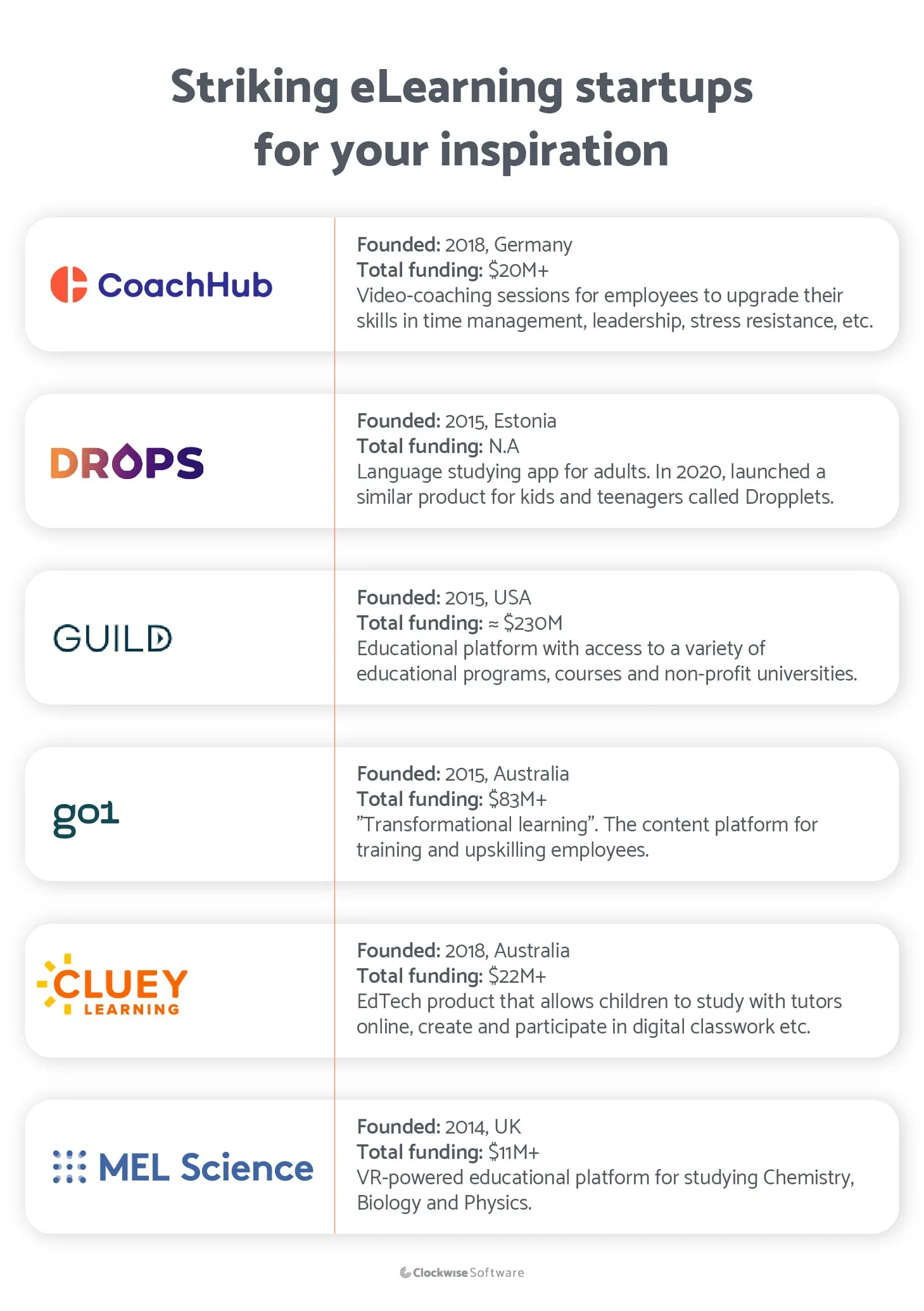
Coach Hub helps employees and specialists with professional growth and development. Through video coaching sessions, employees can upgrade their skills in time management, leadership, stress resistance, and other areas.
In 2018, the Drops language studying app was named the Best App of 2018 by Google. In 2019, it received an EdTech Digest Award. In 2020, the Drops startup launched another app focused on helping kids and teenagers study foreign languages.
Guild Education is a unicorn from Denver, Colorado, that helps working adults learn new things related to their careers or for personal edification. More than 3 million employees have completed programs on the Guild Education platform.
This eLearning platform looks like a massive online library! The Go1 website offers corporate solutions for startups, enterprises, and even government institutions.
This Australian platform has taken online tutoring in Australia to another level with a real-time video sharing engine, a smart algorithm that matches students and tutors, and a virtual whiteboard.
It may seem like science education can only happen offline. Experiments and investigations require physical participation. However, this eLearning virtual reality (VR) startup breaks the myth. Young scientists under 14 can enhance their knowledge of biology, chemistry, and physics with a subscription to MEL Science.
Launched at different times in different corners of the world, each of these startups has managed to earn their first million dollars and has kept growing. Each targets a different group of users and shows that with a narrow focus, a strong determination and a bit of luck, your educational startup can succeed in a region, country, city, or even institution. The narrower your focus, the more successful your efforts may be.

Thorough preparation lays the groundwork for the organic growth of your platform. So take your preparation seriously and create a business model canvas to bring together all the essential pieces of the puzzle.
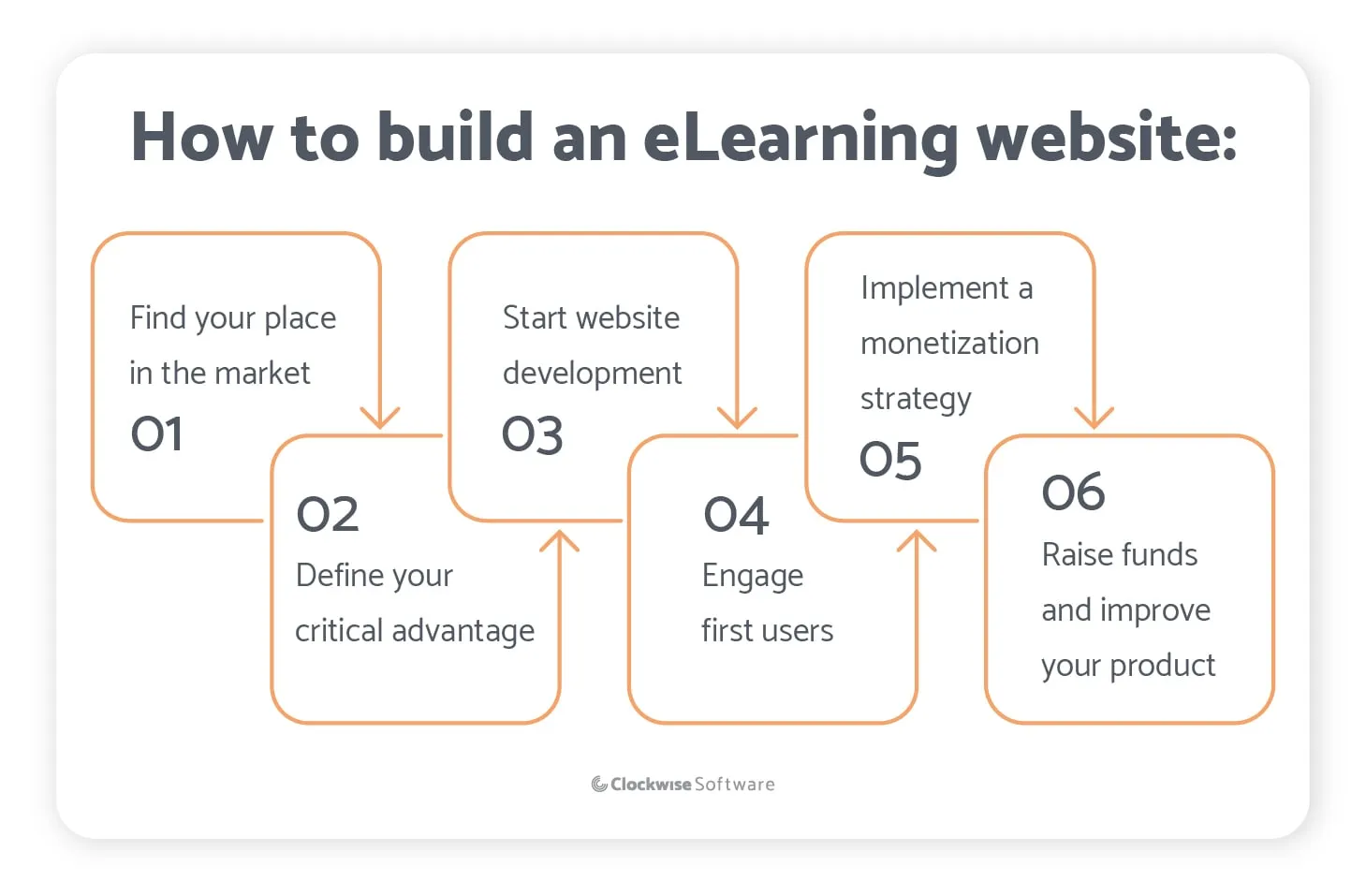
We’ve already mentioned the importance of a narrow focus. Here, we’ll explain what that means.
Have you already analyzed the market in which you’ll launch your app? If not, now is the time to do so. Consider a particular country, town, or even neighborhood. If you succeed locally, going global may just be a question of time.
The Ukrainian educational startup Prometheus began by focusing on Ukraine only. The founders discovered that potential users of major eLearning platforms like Coursera who didn’t speak English couldn’t benefit from these platforms. So Prometheus started as a platform for Ukrainian users. Now it’s the #1 online educational platform in Ukraine with more than one million users.
Following Prometheus’ lead, we can identify another crucial component to analyze: your target audience. At this stage, define your user persona:
Generate as many questions as you can and answer them to get to know your target audience. Being aware of users’ needs increases your chances to succeed in your niche.
Now that you’ve analyzed your user persona, focus narrowly on the courses you may want to provide on your platform.
Remember how Coursera started? In 2011, there were only three courses available: Databases, Machine Learning, and Introduction to Artificial Intelligence. As of now, the platform offers over 6,000 courses. A narrow focus may be your springboard. Start with a few courses and increase their number as your user base and demand grows.
Download the business model canvas and start describing your idea. Step by step, you'll turn it to your brief initial business plan.
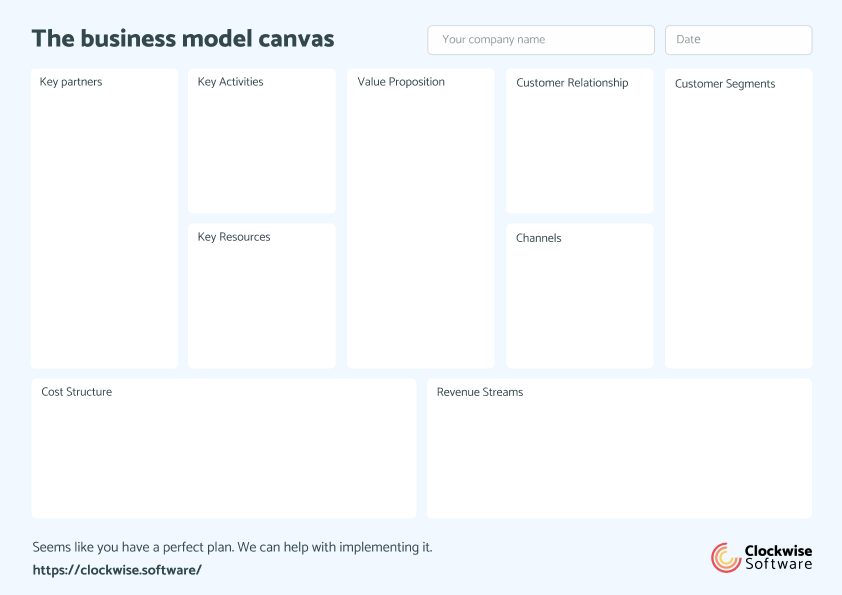
There are multiple types of online learning platforms.
Massive open online courses, or MOOCs, are available worldwide and are known as the main tool for online education. With a MOOC, a user simply creates a profile and chooses the role of a teacher or student. One user may even play both roles, studying English and teaching Chinese, for example. A MOOC platform looks just like a P2P marketplace.
This type of eLearning website looks like a shared environment where users can set up video conferences, discuss lessons with classmates, and measure progress in different disciplines.
On video streaming eLearning sites, users create profiles and either upload educational videos or watch videos to enhance their knowledge.
When looking for your place among EdTech startups, decide on your unique feature. Come up with a brilliant idea for an interactive design, gamification technique, AR/VR component, or any other feature that may win users’ hearts. Take a look at other eLearning products and read users’ reviews of them. Collect information about apps’ disadvantages and reveal gaps in user satisfaction. Then apply your knowledge to upgrade your idea.
Once you’ve done your homework, it’s time to proceed with the engineering. This is a whole new stage of startup development that requires much time and financial resources and consists of several significant components:
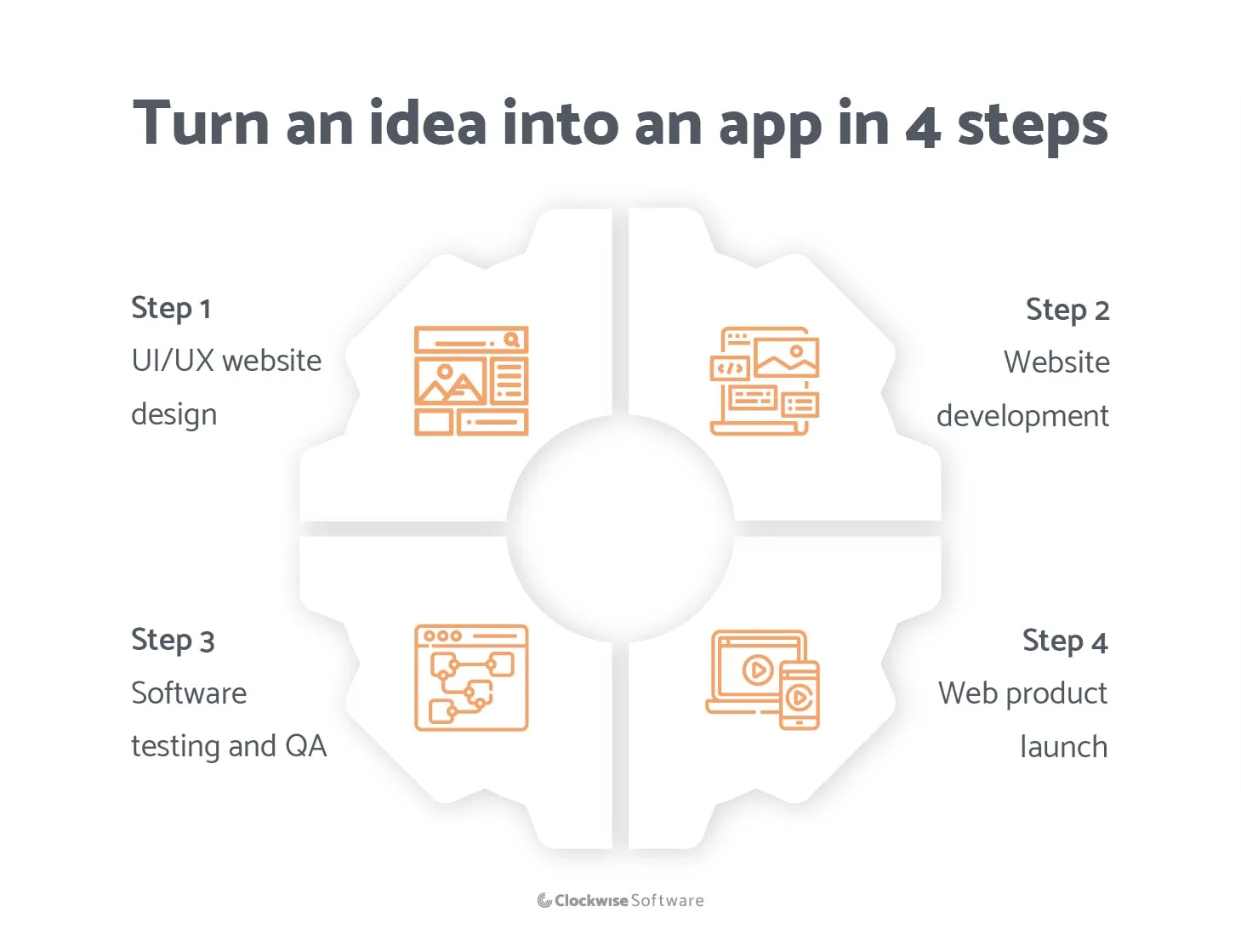
An attractive design may catch users’ attention and make users install your app. User-friendliness and intuitiveness are factors that will make them stay.
Creating a successful website design requires deep expertise in business analysis. In addition, software designers need basic knowledge of Adobe Illustrator, Figma, and other tools.
The next step is to convert the vision reflected in your app’s prototype into code and a real software product. For this, basic knowledge of specific tools won’t be enough. And even if you’re familiar with certain tools and technologies, building an entire web app yourself may turn into a time-eating disaster.
The process can be divided into several steps:
|
Process |
Goal |
Key tools |
|
User interface development |
Create the part of the app users see and interact with |
HTML/CSS, JavaScript and frameworks (React.js, Vue.js, Angular) |
|
Server-side development |
Build the app’s architecture and functionality (the part of the website users can’t see or change) |
Node.js, Symfony, Laravel |
|
Database connection |
Create storage for all data your eLearning website collects: text, images, videos, workbooks, payment details |
|
|
Integration with cloud services |
Host your app on a digital cloud so you don’t need to deal with physical servers |
Amazon Web Services |
|
Integration with a payment gateway |
Enable payments within the app |
Software development is tricky, and you may find it difficult to deal with on your own. Getting to know each tool takes time and effort, which you’ll also need to successfully start your business.
By delegating software engineering, you can save time and energy for more significant business tasks. Also, cooperating with an experienced development team allows you to launch your app faster and hit the market when demand is high.
To save your time and energy for more significant tasks and launch your app when the market needs it most, consider delegating software engineering processes to:
We’ve highlighted the pros and cons of each method in our comprehensive article on outsourcing software development. Take a look at it and pick the best option for your company.
In a world full of established eLearning websites, you won’t succeed with a low-quality product. People are used to websites that fully meet their demands, respond immediately, and work impeccably. Thus, once users detect an issue on your website, they’ll leave it and go looking for a better product.
Don’t let that happen by avoiding concerns about your product’s quality.
Even if your code is pure and your features meet all your users’ requirements, you still need to work with someone who can carefully check your app, build test cases, and ensure your website can handle high loads. These and many other tasks should be assigned to a software tester or quality assurance engineer.
Once everything is ready, it’s time to get your website up and running. From now on, business-related tasks are of the highest importance.
One of the greatest challenges for an online learning marketplace is attracting the first users. This is the chicken and egg problem, and there are several ways to overcome it.
Pay particular attention to attracting teachers and trainers first. This group of users will generate content and attract students with their courses. Great insight from similar platforms is to attract teachers with their own student bases. While offline classes are practically forbidden these days, teachers are looking for handy tools to organize online classes. Your platform may be one of them. By attracting teachers who already have students, you can get your first users, collect their feedback, and make your platform even better.
With the right monetization strategy, you can solve two critical tasks:
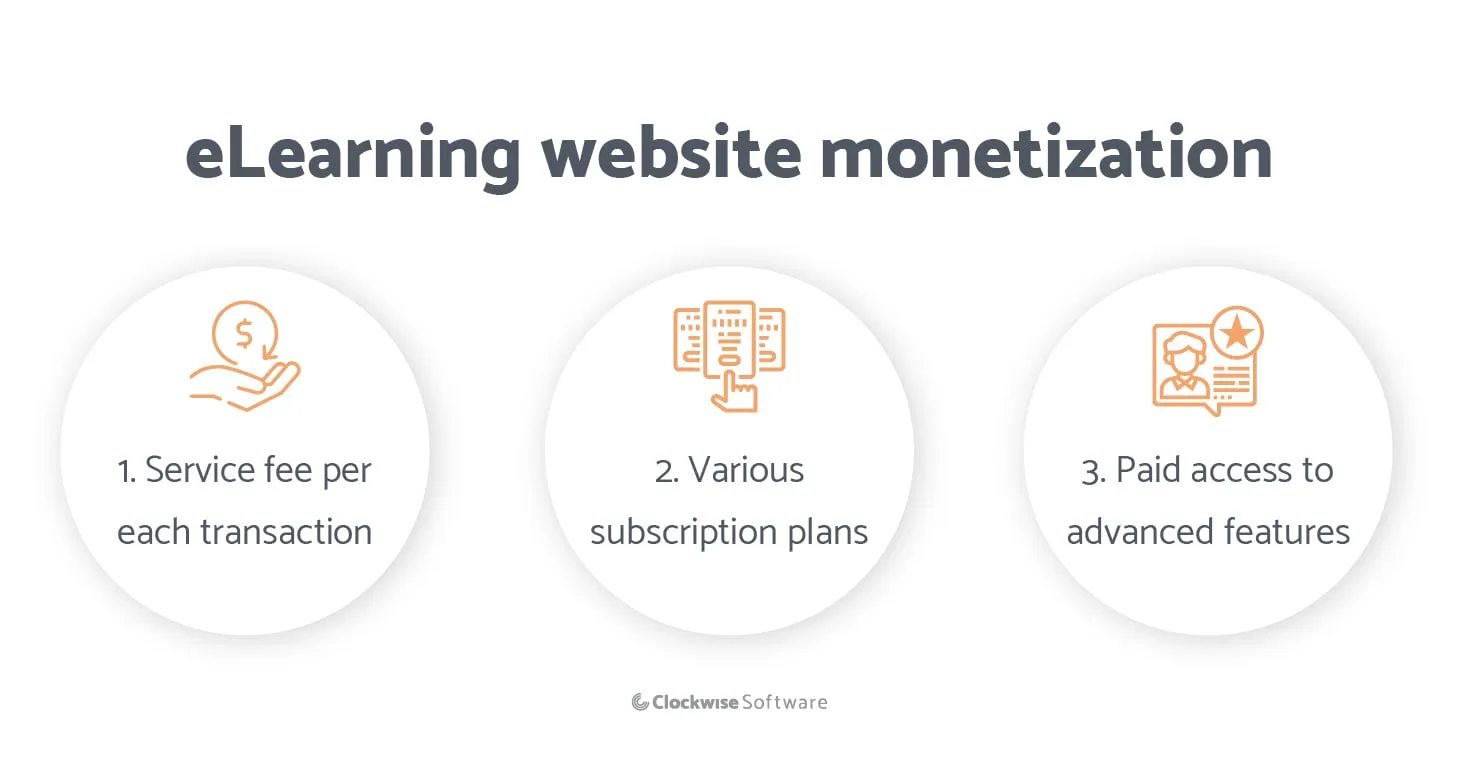
With eLearning platforms, there are three tried and tested monetization approaches:
With this model, you set a flat rate or percentage fee and charge teachers for each successful sale. Or you can charge students for each course they buy.
By subscribing to your platform, users can get access to some or all courses.
Premium accounts grant access to premium features. For example, part of a course may be free while other parts are only available for premium users. Or a course may be available in a video format, while premium accounts allow learners to join a live chat with the instructor to discuss the topic.
Your choice of monetization model depends on the specifics of your app. So take your time, analyze the services you offer, and come up with an idea of how to charge users.
You can reach out to investors with just an idea and a PowerPoint presentation. You can show them your prototype or apply for a government grant with nothing but a plan. However, with a high-quality MVP demonstrating your idea is viable, your chances to win their hearts drastically increase.
A business model canvas will help you demonstrate your idea. This document will show investors that you need investments to better meet users’ needs.
However, there are other critical things you should know before contacting investors: How much money do you need to make your platform competitive? What amount do you need for software maintenance and improvements? How much does it cost to build an app like Udemy or Coursera? Would you like to build a mobile solution and make your app more user-oriented? How much does a mobile app cost?
We prepared a definite guide on how much it costs to build a website like Udemy. Make sure to check it and add the final touches to your business plan.
